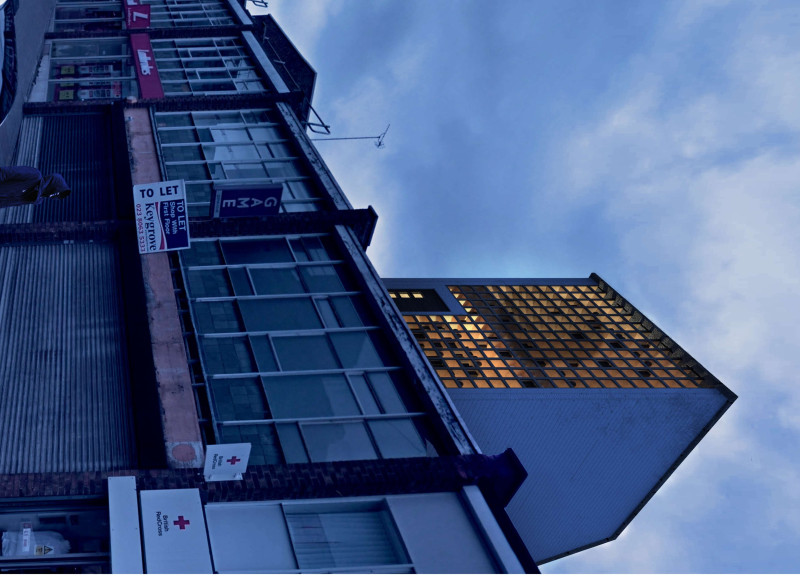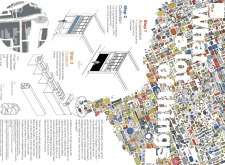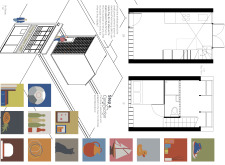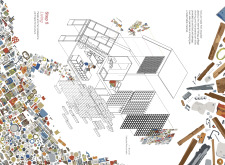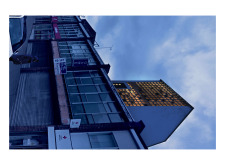5 key facts about this project
The project explores a microhome concept within the lively context of Southampton’s docklands. By redesigning an empty shop, the work aims to blend sustainability and community involvement. The design challenges typical housing concepts by using existing buildings and resources, encouraging a conversation about managing waste and local identity through its thoughtful design.
Sustainability and Resource Use
The first step in the project involves acquiring a 1-2 storey empty shop with a flat roof, creating a foundation for diverse uses. The shop acts as a temporary gathering point for collecting waste materials, specifically high-density polyethylene (HDPE) and polystyrene sourced from local residents and nearby businesses. This approach showcases a practical solution to environmental issues by turning discarded materials into usable design elements.
Design Philosophy
The concept is framed around the idea known as "What a Lot of Things." This perspective invites residents to rethink ownership, as the design aims to create a microhome that allows for minimal possessions. Innovative details, such as the pneumatised cladding made from injected air, contribute to a lightweight yet sturdy structure. This design not only maintains strength but also provides insulation, addressing the requirements of modern living.
Adaptability and Community Connection
The conversion of the shop into a microhome emphasizes the flexibility of urban spaces. Features such as shelves hidden behind small panes ensure privacy while also allowing for personal displays. This setup encourages residents to reflect on what they choose to show, creating a bond with their belongings and promoting their individual expressions within shared areas.
Material Reuse and Functionality
The project goes further, incorporating internal fittings, grillage shelving, and floorboards salvaged from previous buildings. This choice strengthens the commitment to sustainable building practices while showing how reclaimed materials can play an essential role in urban design. Each element in the microhome contributes to a story of practicality, establishing a direct connection between how spaces are designed and how they function.
The cladding, painted to resemble traditional wooden shingles, also plays a role in environmental responsibility by helping to prevent leaching of microplastics. This attention to detail reflects broader ecological concerns while providing a consistent appearance for the overall structure.


